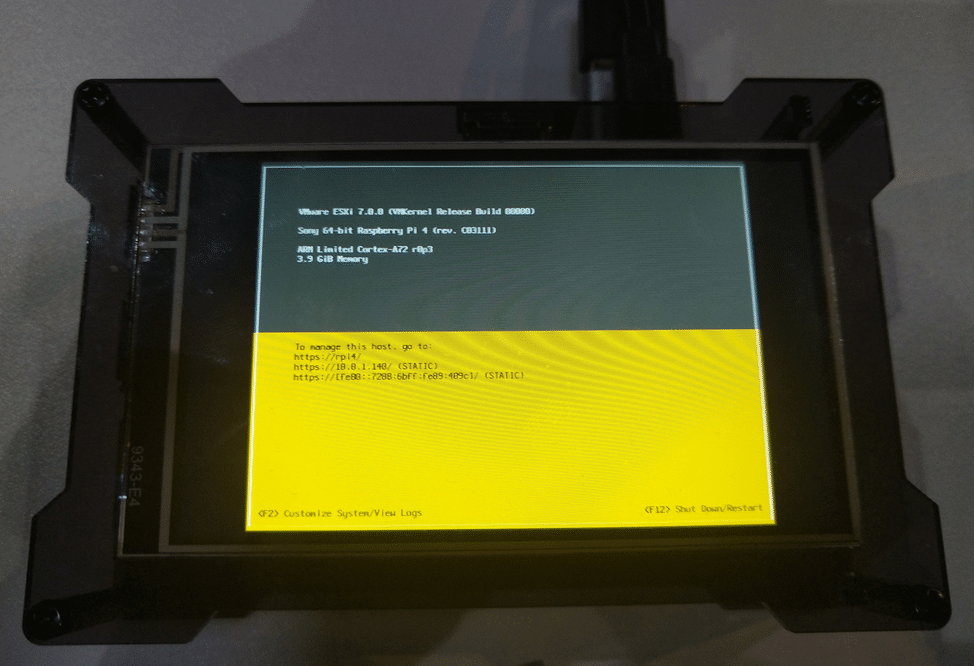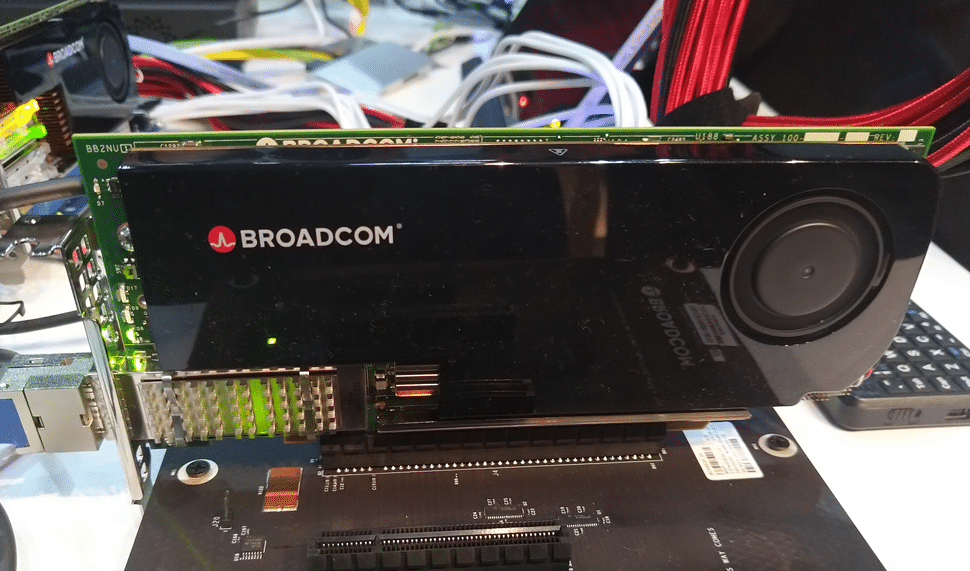In 2018 at VMworld US Pat Gelsinger and Ray O’Farrell gave an outlook on how Edge and IoT devices could benefit from virtualization. A live demo showed a mission critical application in a wind turbine. So far nothing special – except for the fact that the two ESXi hosts were running on ARM architecture.
Running ESXi on ARM opens a range of new possibilities. For example running it on a Raspberry Pi.
This year at VMworld Europe 2019 ESXi on ARM had a dedicated booth to show what is possible and gave potential use cases with ESXi on ARM architecture.
Use Cases
ESXi on Raspberry Pi

We were able to see ESXi running on a Raspi4 (notice the build number). It is not yet possible to run ESXi on a native Raspi4. It is necessary to adjust its firmware. But in the near future it’ll be possible to flash an ESXi image onto a native Raspi4. You can’t run al lot of VMs on a single Raspi. But think of two Raspi running ESXi and each hosting a single VM. If you run this little Edge cluster on a remote site like a telco transmitter or a wind turbine or any other critical edge device, you’ll be able to do infrastructure maintenance without shutting down your mission critical service. Just vMotion the VM to the second ESXi node. After finishing maintenance you can enable for example FT on that VM. So even if one ARM host should fail, there’ll be no service downtime. With hardware invest of around 100 € (licenses not included) you’ll get a HA edge cluster.
ESXi on Smart NICs
The ESXi on ARM Team showed some ESXi on SmartNIC installations. These are special NICs with enough RAM and CPU to run ESXi. Yes, ESXi running on a NIC – just amazing! Imagine a host with one ore more SmartNICs running ESXi hypervisor. You can for example offload your data plane from the host to the SmartNIC and reduce load on your host CPU.

ESXi on the Edge
ESXi has a small footprint. ARM architecture is very energy efficient, has a small form factor and does not require a lot of cooling. It makes both the ideal combination for Internet of Things (IoT) and Edge devices. Where availability and redundancy is more important than high performance.
vSAN Witness
Although it is possible to run a vSAN witness on a Raspberry Pi, it is not recommended for production (yet). See the live demo by Regis Duchesne at VMworld 2018 (go to minute 39). Last year they had to strip down the ESXi image to run on the small resources of an Raspi3, but this year they utilized a Raspi4 which has a stronger CPU and more RAM.
Armed and Ready
Andrei Warkentin (Arm Enablement Architect, VMware) and Daniel Beveridge (Senior Architect, Office of the CTO, VMware) gave an interesting talk about “VMware Tech and Solutions on Arm-Based Systems (OCTO2944BU)” (free VMworld login required to watch the video).
What’s already possible?
Some of the features we’ve known for years in classic vSphere datacenters are also available on ARM architecture.
- High Availability
- Fault Tolerance
- vMotion
- DRS
- vCenter Management
Architecture constraints
If you’re thinking about replacing all your x86 hosts by ARM based hosts, you’ll have to keep in mind some architectural constraints. It’s only possible for guest OS with an ARM kernel. There are many Linux flavours that can run on ARM devices. Although there’s also a Windows 10 on ARM, it doesn’t mean you’re supposed to run all of your x86 applications on it. You can run all ARM32 and ARM64 apps from the Microsoft store, but x86 apps only run in emulation.
Links
- vSphere Blog – ESXi on Arm at the Edge, on the SmartNIC and in the Cloud
- ESXi on ARM Twitter channel – It’s an Arm world (virtualized)
- Linux on ARM
